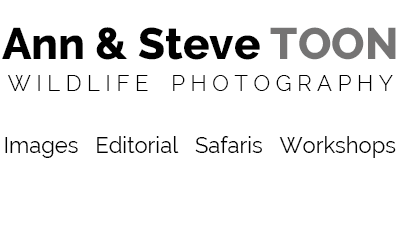Tattooed with bruises from off-roading. Eyes sore from peering into the bush (and through our camera viewfinders). Cold in the mornings, hot in the afternoons. Sun drilling down on just one side of our faces. Grit crunching between our teeth. Creased old khaki duds. Dust everywhere. Why put yourself through it?

Our first Khwai encounter is a very special one
The answer is currently staring down at us from a stately raintree in Botswana’s Khwai conservancy on the edge of the Okavango Delta. She’s draped over a thick branch, her head resting heavily on huge paws; her wide-eyed gaze meeting our own. This is our first visit to this conservancy and we’re super-excited to meet our first resident of this special place.
Our little plane only touched down just a couple of hours earlier, yet here we are cautiously tailing a beautiful, thick-set (possibly pregnant?) female leopard we picked up about an hour ago – just moments into our very first afternoon game drive out on the reserve.
This 180,000 hectare wilderness, sandwiched between the world-famous Moremi and Chobe national parks, boasts just a small handful of lodges so tourist traffic is light. We’re guests of Pangolin camp. There are no fences between Khwai and the neighbouring protected areas and wildlife moves seamlessly from one reserve to another. Because the concession is private we also have the added bonus, for us wildlife photographers, of being able to travel off-road to get closer and also achieve much better angles on subjects.
Khwai’s noted for its regular predator sightings, its water channels attract good amounts of game and birdlife, wild dogs pass through, denning there in the winter months and there are buffaloes and elephants aplenty. So you can imagine how keen we were to explore the place on this recce. Despite all we’d read, we didn’t expect to have two hours of prime leopard-time on our very first drive.

Resting in a raintree – we settle down too and wait for her to move.
When we first clapped eyes on our spotted friend she was resting at the base of a tree. Well-camouflaged in the swaying, sun-bleached grasses, it took a while to pick her out. The light was still harsh and there wasn’t really a good image to be had. But you don’t pass up, or pass by, a sighting like this one. We waited patiently for better light and the chance she might move.
We didn’t have to wait too long. For the next couple of hours we followed closely, but carefully, as she restlessly prowled around, trying out different trees for size. She climbed them effortlessly, bounding up the trunks, selecting the right branch and snoozing for a while, then climbing back down and beginning her evening perambulations.

This private reserve is home to plentiful big game…
The light softened, then turned gold. The blue hour came and went and still we kept our eyes and lenses locked on her. When all available natural light was gone, we resorted to using a spotlight – gently and sparingly – marvelling at her grace as she stretched before starting out on her long night of hunting. We stayed with her until the very last moment, then bade her goodnight and watched her disappearing into the blackness.
It was the best of Botswana welcomes.
In the following few days we got lucky with wild dog, spent time with a cheetah that had just killed a reedbuck, held our noses while photographing a hyena clan enjoying dead hippo for their picnic, and found a very handsome male lion lurking in the long grass. We had sniffs of other leopards too, but in the end the trails went cold.
We also spent time trying out the conservancy’s famous low level elephant hide where massive adult bulls regularly come to drink and pass almost too close for comfort; kicking sand in your face (and lens!) It’s an awe-inspiring experience which should be enhanced even further when a second low-level hide is opened elsewhere on the conservancy sometime soon.
We even found ourselves with front row seats at the bush premiere of Nat Geo conservationist and explorer Steve Boyes’ fascinating new documentary film ‘Into the Okavango’ which had its TV world premiere this month on Nat Geo Wild. Before the titles rolled (we were joining US journalists who were there on a press trip and also passing through Pangolin camp), Steve gave a talk about the epic four-month expedition to explore the river system that feeds the Okavango, discussing the making of the film and his passion for this vast wetland wilderness that wrapped us round beneath the stars .

…but it’s the regular predator sightings that appeal to us
And all the while, as elephants rumbled in the distance, we chomped on popcorn, just as you would in any local multiplex.
It was too short a visit. Just a few hot, dusty, memorably magic days.
We can’t wait to go back…

A cheetah spends the day near her recent kill

Big bull elephants cut the dust at this busy waterhole where a photo hide has been sunk

Safe in the half-buried container hide you can admire the huge beasts at close quarters

The stench is foul but this dead hippo is a good feed for the hyena clan

Alert now our quarry restlessly moves from tree to tree

Looking back on a memorable visit to a wilderness where predators roam free

